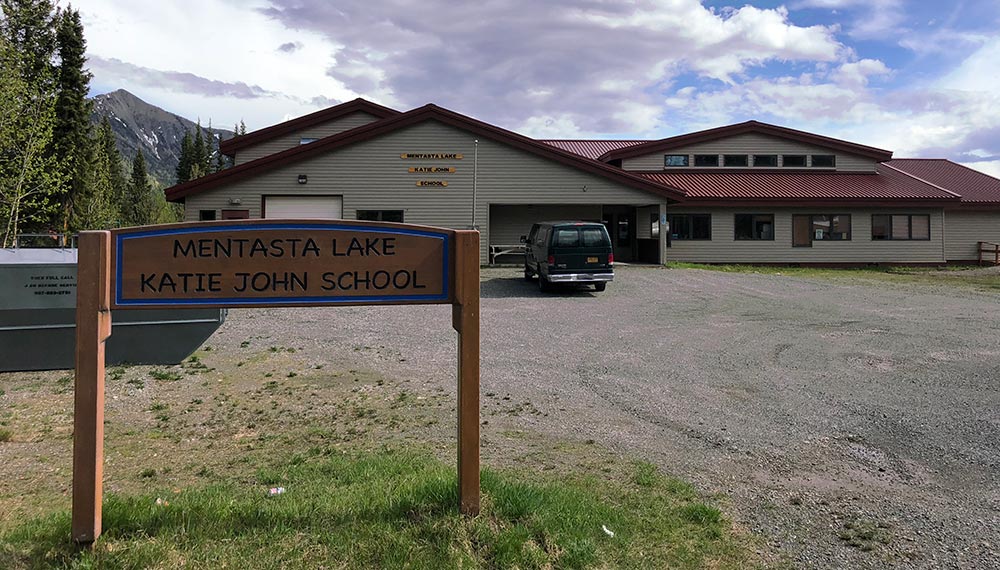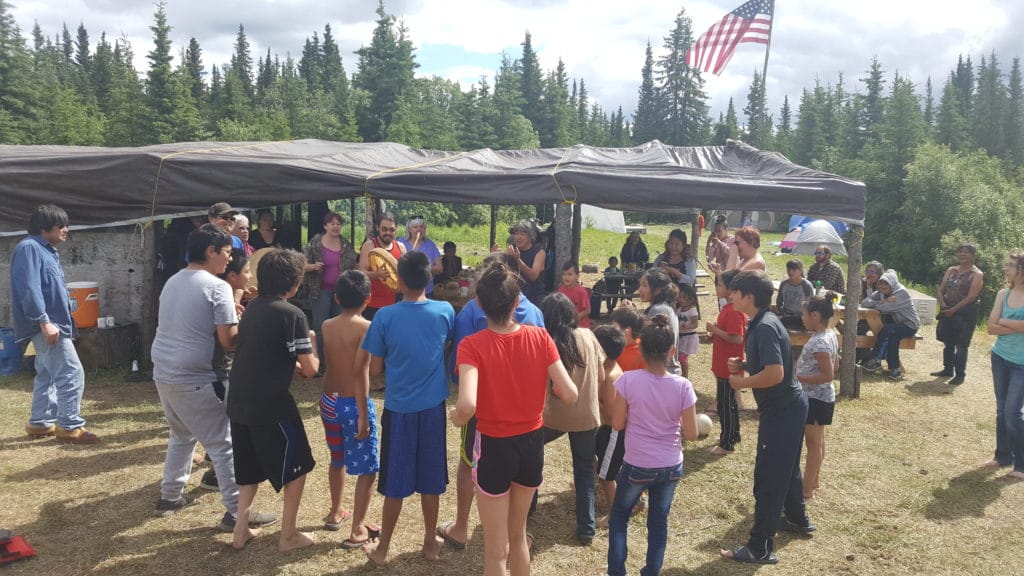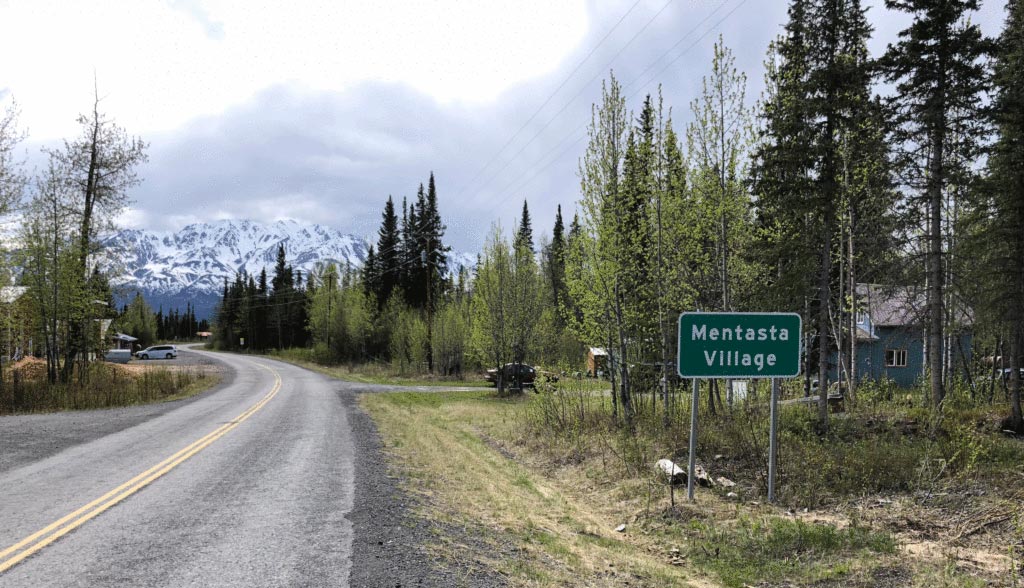
The Ahtna Athabascan people have lived in the Copper River basin for time immemorial. There are eight villages within the Ahtna region; each is unique but all are connected by the values and traditions of the Ahtna people and culture.
Mendaesde – Mentasta Village
The northernmost Ahtna community on the Tok Cutoff Highway is Mentasta, home to the “headwaters people,” who have been stewards of the Upper Copper River lands for centuries. Mentasta Lake is connected to the Tok Cutoff from the Richardson Highway by a 6-mile spur road. The Slana River that drains into the Copper River and its tributaries are at the heart of the community’s homeland. These rivers are spawning grounds for salmon and whitefish, staples of the Ahtna people’s diet. Dall sheep graze on mountain slopes, caribou migrate across the land, and moose browse the forested lowlands. Spruce and birch forests are home to berries, bark, wood, roots, and many plants essential to our traditional way of life. Looking up at Mentasta Mountain, people are reminded of their traditional stories that tell about the origin of the mountain, where they came from, and their place in the world.

Mentasta Traditional Tribe is a federally recognized tribe. The Mentasta Lake area is reported to have been the best-known route of Native immigration across the Alaska Range and early village settlements have been located at various sites around the lake. The families that presently reside in Mentasta Lake come from Batzulnetas, Suslota, Slana and other villages within the area.
The village’s most well-known resident was the late Katie John, who was 95 when she passed away in 2013. She was an amazing woman whose advocacy for Alaska Native rights, including customary and traditional (subsistence) fishing and hunting rights, still impacts Alaska today. It is because of efforts like hers that many of the Ahtna people’s traditional practices are recognized and protected. Mentasta Lake Katie John School, a K-12 campus serving community students, is named in her honor.
Today children attend public schools and much of their learning occurs outside the family, but traditionally, children learned by observation, watching adults work and trying out tasks for themselves. They were expected to be proficient in most tasks by the time they were twelve. This prepared children to deal with a difficult and demanding environment. It required them to be industrious and hard working. They learned to value family, community and cooperation.

We Will Sustain Our Tribal Identity
• Learn from our Elders
• Protect our land and subsistence rights
• Restore our trails, our language, and our oral histories
• Teach our children and grandchildren in culturally responsive schools
We Will Share Our Story
• Inspire our communities, children, grandchildren, and great grandchildren
• Engage our children in a meaningful dialogue with Elders
• Serve as a model for other indigenous peoples
• Offer a message of hope and empowerment
Roasted Salmon Place
According to the late Fred John, long ago the Ahtna People fought many foes to establish the village of Nataelde, the “Roasted Salmon Place,” which people now call Batzulnetas. Batzulnetas, on Tanada Creek at the confluence with the Copper River, is a very important place with plentiful salmon. Generations of Ahtna people, ancestors and Elders of present-day Clans, lived and thrived on the bounty of this special place.Today the once-abandoned village breathes new life. Elders who once worked and played along the banks of Tanada Creek return to Batzulnetas for a summer culture camp where they pass on traditional life skills and values to their children and grandchildren.
The children learn by watching, then trying to master the different tasks. They learn how to cut moose, catch fish using a fishwheel, cut and dry fish, build and use a steam bath, collect plants and roots, sew birch bark baskets, set animal snares, and to do intricate beadwork.
Culture camp allows everyone to return to their land and traditions. It is a time for Elders to speak to the children, to tell stories, teach their language, and help children rediscover traditional life and the unwritten Tribal laws.
